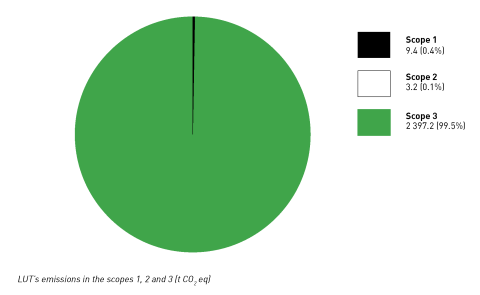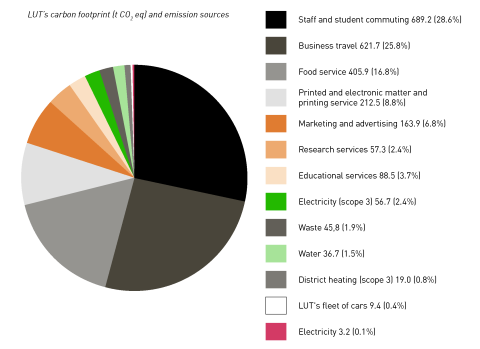Carbon footprint – scopes 1, 2 and 3

The carbon footprint is calculated with the GHG Protocol, which classifies emissions (t CO2 eq) into three scopes.
Scope 1 includes direct emissions that occur from sources owned or controlled by the organisation. At LUT, this means a fleet of six corporate cars, which accounts for merely 0.4% of the total carbon footprint.
Scope 2 includes purchased electricity. All of LUT’s scope 2 emissions are generated by the Kouvola regional unit. In Lappeenranta, this scope is zero because the campus has used renewable and carbon-neutral electricity for years. Lahti and Mikkeli are not included in this scope since electricity there is included in the property rent and therefore belongs to scope 3.
Scope 3 includes indirect emissions related to the university’s activities. This scope also includes district heating and electricity that are included in the property rent.
Scope 3 – emission sources

99.5% of LUT’s carbon footprint belongs to scope 3.
Major sources of these indirect emissions are staff and student commuting
, business travel, and campus food services.
District heating is included in LUT’s property rent. A notable improvement was achieved in July 2022, when LUT’s Lappeenranta campus switched to certified carbon neutral district heating.
We focus on environmental handprint
Climate impact assessments have traditionally examined the carbon footprint. At LUT, we also pay attention to the environmental handprint.




